Flowering Currant Ribes sanguineum 'Koja'

ABOUT
The plant in question is commonly known as Red Flowering Currant. It is distinguished by its striking appearance, which features clusters of pendulous flowers that dangle gracefully from its branches. These blossoms exhibit a deep pink to reddish hue that commonly appears in the spring season, drawing attention with their vibrant color and a tube-like shape. The foliage of Red Flowering Currant comprises green leaves that have a lobed and toothed margin, adding a textured backdrop to the colorful display of flowers. The leaves can produce a strong, pungent aroma when crushed. In the later months of the year, following the blossoming period, the plant produces berries that are typically black or dark blue, providing visual interest even after the flowering season has concluded. The overall visual impact of the Red Flowering Currant is one of natural elegance and seasonal color variation, making it a popular choice for ornamental purposes in gardens and landscapes.
About this plant
 Names
NamesFamily
Grossulariaceae.
Synonyms
Red Flowering Currant, Blood Currant, Pink Flowering Currant, Winter Currant.
Common names
Ribes sanguineum 'Koja'.
 Toxicity
ToxicityTo humans
The common name of Ribes sanguineum 'Koja' is flowering currant. Flowering currant is generally not considered toxic to humans. However, like many plants, it may cause mild stomach upset if ingested in large quantities due to the presence of plant compounds meant to deter herbivores. It is not known for having any severe toxic effects or causing serious symptoms of poisoning in humans. It is always recommended to exercise caution and not consume parts of ornamental plants unless they are known to be edible.
To pets
Flowering currant is not commonly listed as a toxic plant to pets. However, as with humans, ingestion of plant material from flowering currant may cause mild gastrointestinal upset in some pets. Symptoms could potentially include vomiting or diarrhea if a pet ingests a significant amount of the plant. However, serious poisoning or severe symptoms are not typically associated with the flowering currant in pets. Always keep an eye on your pets and prevent them from consuming plants that are not verified as safe for their consumption.
 Characteristics
CharacteristicsLife cycle
Perennials
Foliage type
Deciduous
Color of leaves
Green
Flower color
Pink
Height
6 feet (1.83 meters)
Spread
6 feet (1.83 meters)
Plant type
Shrub
Hardiness zones
6
Native area
Northwestern America
Benefits
 General Benefits
General Benefits- Attracts wildlife: Ribes sanguineum 'Koja', commonly known as flowering currant, is loved by bees, butterflies, and birds for its nectar-rich flowers.
- Ornamental value: It is widely appreciated for its showy pink to red blossoms that brighten up landscapes in early spring.
- Drought tolerance: Once established, this plant can withstand periods of drought, making it a good choice for water-conservative gardens.
- Low maintenance: Flowering currant doesn't require much care beyond occasional pruning to maintain its shape and promote healthy growth.
- Seasonal interest: This shrub provides aesthetic appeal with its spring flowers, summer berries, and autumn foliage color.
- Native habitat support: Being a native species in certain regions, it provides natural sources of food and shelter for local fauna.
- Easy propagation: Flowering currant can be easily propagated from cuttings, making it a cost-effective option for gardeners looking to expand their plantings.
- Adaptability: It adapts well to a variety of soil types, though it prefers well-drained soils and can tolerate both full sun and partial shade environments.
 Medical Properties
Medical PropertiesThis plant is not used for medical purposes.
 Air-purifying Qualities
Air-purifying QualitiesThis plant is not specifically known for air purifying qualities.
 Other Uses
Other Uses- Ribes sanguineum 'Koja', also known as flowering currant, can be used in natural dye production, exploiting the pigments found in its flowers and fruit for coloring fabrics or yarns.
- Flowering currant branches may be used in basket weaving or as a supporting structure in natural garden sculptures due to their flexibility and strength when young.
- The aromatic qualities of flowering currant leaves can be harnessed to create a unique, fragrant potpourri mix.
- Crushed leaves of the flowering currant can act as a repellent for certain pests in gardens, working as a natural insect deterrent.
- The dense foliage of flowering currant can provide nesting materials for birds, offering fibers for building their nests.
- Used in creating a fragrant garden, flowering currant's blossoms can contribute to a scented landscape design, especially appealing in sensory gardens.
- When dried, the branches and leaves of flowering currant can be incorporated into decorative wreaths and floral arrangements for rustic crafts.
- In photography and painting, flowering currant can serve as an inspiring subject due to its vibrant flowers and the aesthetic structure of its branches.
- Flowering currant plants can be used as a natural windbreak in coastal areas, reducing soil erosion with their root systems.
- For educational purposes, flowering currant can be included in botanical studies to demonstrate plant growth, pollinator attraction, and ecosystem interdependence.
Interesting Facts
 Feng Shui
Feng ShuiThe Red Flowering Currant is not used in Feng Shui practice.
 Zodiac Sign Compitability
Zodiac Sign CompitabilityThe Red Flowering Currant is not used in astrology practice.
 Plant Symbolism
Plant SymbolismRibes sanguineum 'Koja', commonly known as the flowering currant, typically does not have a widely recognized symbolism as some other plants might have. However, if one were to infer its symbolic meanings based on its characteristics and the context in which it is often seen, it could potentially be associated with the following ideas:
- Beauty and Splendor: The flowering currant is well-known for its vibrant, showy flowers that bloom in spring, symbolizing natural beauty and the splendor of the season.
- Renewal and Rebirth: As a spring bloomer, the flowering currant can signify the renewal and rebirth that comes with the end of winter and the beginning of a new growth cycle.
- Survival and Adaptability: Given its hardiness and ability to thrive in various conditions, the flowering currant can represent survival, resilience, and adaptability to one's surroundings.
 Water
WaterThe Flowering Currant ('Koja' variety) prefers consistently moist but well-drained soil. During the spring and summer growing season, water the plant deeply once a week, providing between 1 to 2 gallons per watering, depending on the size of the plant and the weather conditions, to ensure the soil remains moist but never soggy. In the fall and winter, reduce watering frequency to once every two to three weeks as the plant's growth slows down, using approximately 1 gallon each time. Adjust for rainfall, as overwatering can lead to root rot.
 Light
LightFlowering Currant thrives in a spot with full sun to partial shade. The best lighting conditions for this plant are where it can receive at least four to six hours of direct sunlight daily, but it can also tolerate filtered light during the hotter parts of the day. If the plant is in a region with very hot summers, dappled afternoon shade will help protect it from intense heat.
 Temperature
TemperatureFlowering Currant grows well in a range of temperatures and is quite hardy. It can survive in temperatures as low as 20 degrees Fahrenheit during dormancy in the winter and can handle temperatures up to 75 degrees Fahrenheit during the active growing season. The ideal temperature range for this plant is between 60 to 75 degrees Fahrenheit during the spring and summer.
 Pruning
PruningPruning Flowering Currant is mostly done to maintain shape and to remove any dead or damaged wood. It's best to prune just after the plant finishes blooming in the spring, which encourages new growth and subsequent flowering. Thinning out older branches every few years also promotes a healthier plant by increasing air circulation. Generally, it should be pruned at least once a year to keep it looking its best.
 Cleaning
CleaningAs needed
 Soil
SoilFlowering Currant prefers well-draining, fertile soil with a pH range of 6.0 to 7.0. A soil mix composed of equal parts loam, peat, and well-rotted compost can support its growth, ensuring proper drainage and nutrient availability.
 Repotting
RepottingFlowering Currant, being a shrub, does not typically require frequent repotting. It's generally repotted or transplanted only if it outgrows its current location or container, which is likely to be every few years.
 Humidity & Misting
Humidity & MistingFlowering Currant thrives in average outdoor humidity levels. It is not particularly demanding in terms of atmospheric moisture and can tolerate the natural fluctuations of humidity found in its growing regions.
 Suitable locations
Suitable locationsIndoor
Provide bright light, cool temps, and good air circulation.
Outdoor
Plant in sun to part shade, in well-drained soil.
Hardiness zone
6-9 USDA
 Life cycle
Life cycleThe Red Flowering Currant, Ribes sanguineum 'Koja', begins its life cycle when a seed germinates in late winter or early spring, given suitable moist and cold stratification conditions. The seedling grows through spring and summer, developing into a young plant with characteristic lobed leaves. In its vegetative stage, the plant forms a woody stem and branches, maturing over a couple of years before it starts to flower. Flowering typically occurs in early spring, where pink to red blossoms attract pollinators for sexual reproduction. After pollination, the flowers develop into small berry-like fruits that ripen throughout summer, containing seeds for the next generation. The plant, being deciduous, will lose its leaves in the fall and enter dormancy during the cold winter months, completing one full cycle and ready to start anew with the return of spring.
 Propogation
PropogationPropogation time
Spring to Summer
Propogation: The Ribes sanguineum 'Koja', commonly known as the flowering currant, is best propagated through softwood cuttings during late spring or early summer when the plant’s growth is vigorous. To propagate using this method, one would take cuttings of about 6 to 8 inches (15 to 20 centimeters) from the current year’s growth. The leaves on the lower half of the cutting should be removed, and the cut end can be dipped in a rooting hormone powder or solution to encourage root development. Afterwards, the cutting is planted in a well-draining soil mix, often a combination of peat and perlite, ensuring that the leafless part is buried. The cuttings should be kept moist and in a warm, indirect light until roots have developed, which usually takes several weeks. Once rooted, they can be transplanted into individual pots and gradually acclimatized to outdoor conditions before being planted out in the garden.
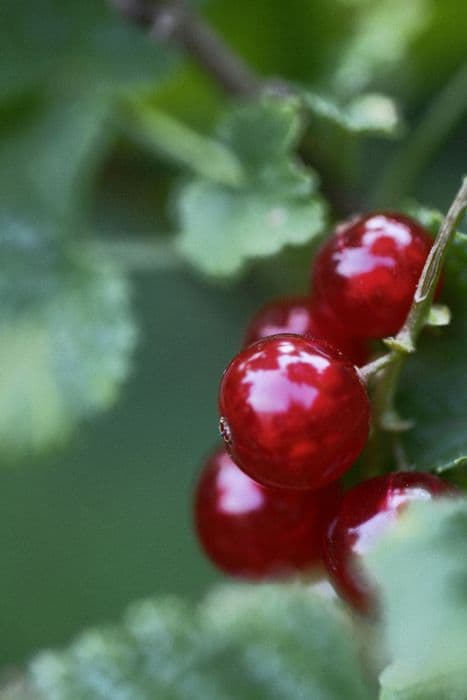
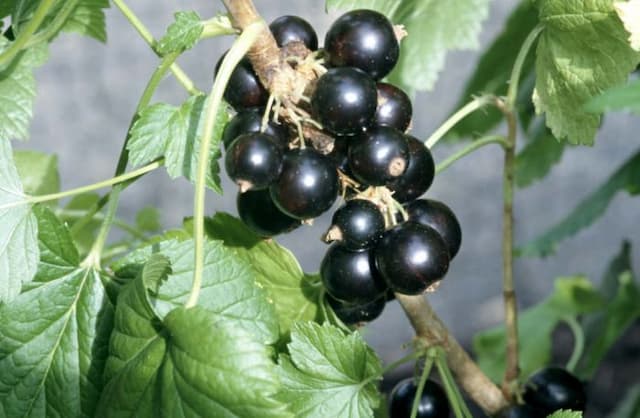
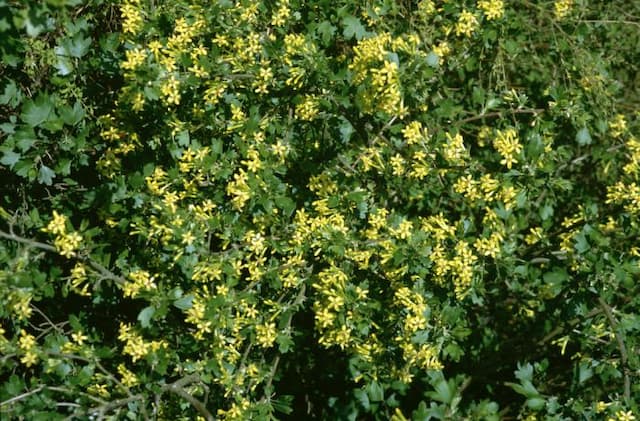



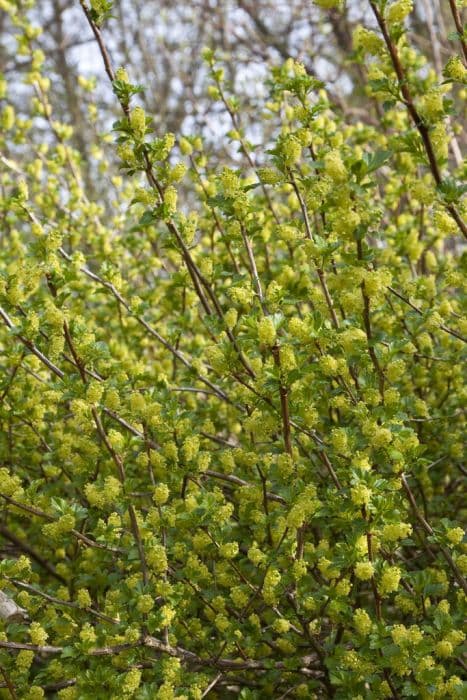
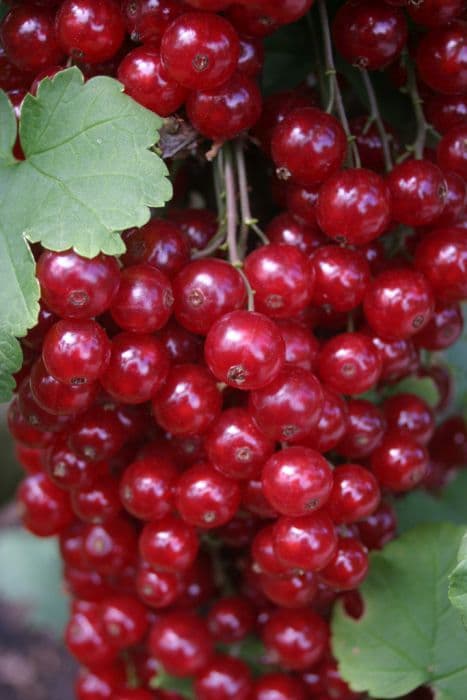
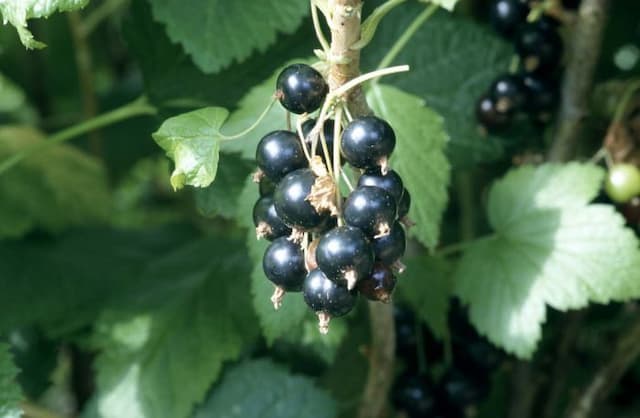
![Flowering currant [White Icicle]](/_next/image?url=https%3A%2F%2Fplants-admin.emdemapps.com%2Fimages%2Fplants%2F%2Fimages%2F604b5fe15ab5b.png&w=640&q=75)